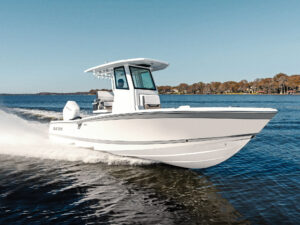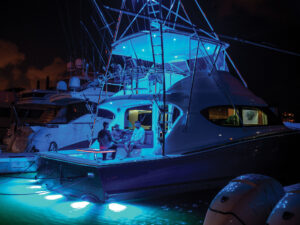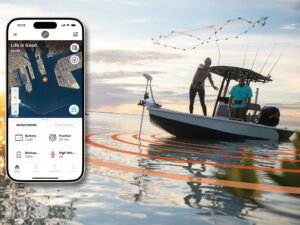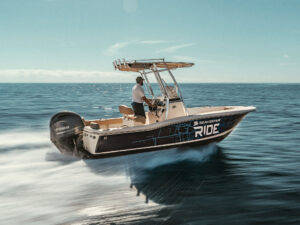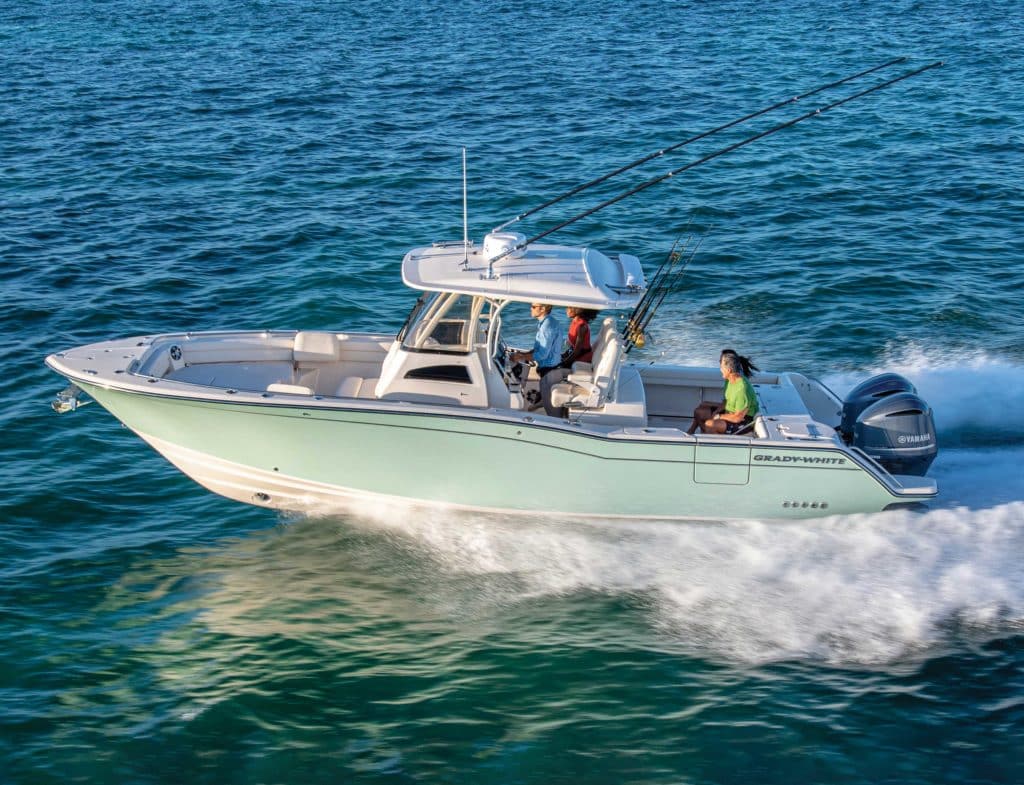
On the late-spring afternoon when we sea-trialed Grady’s Canyon 326 on Maryland’s upper Chesapeake Bay, a forecast calling for rain and strong winds threatened cancellation. We persisted, boarding a group of seven anglers—a perfect chance to evaluate stability and performance with a full load.
First Notes
Grady designed the width of the three-across helm seating so the entire unit tucks neatly behind the protective structure of the console and its full-height windshield. Fresh air still circulates, but the wind force is tempered.
The standard hardtop superstructure also fits within the console’s width. The absence of full-height piping creates broader port and starboard walkways, and the level deck enhances safety.
As we cruised toward the Miles River in search of some fish-holding ledges, the 326 made easy work of the chop, deflecting wind-swept spray out and away.
I settled into one of the helm seats, which easily adjust fore and aft, and feature flip-up bolsters and armrests, and flip-down footrests. Others in our crew opted for the foldaway aft bench.
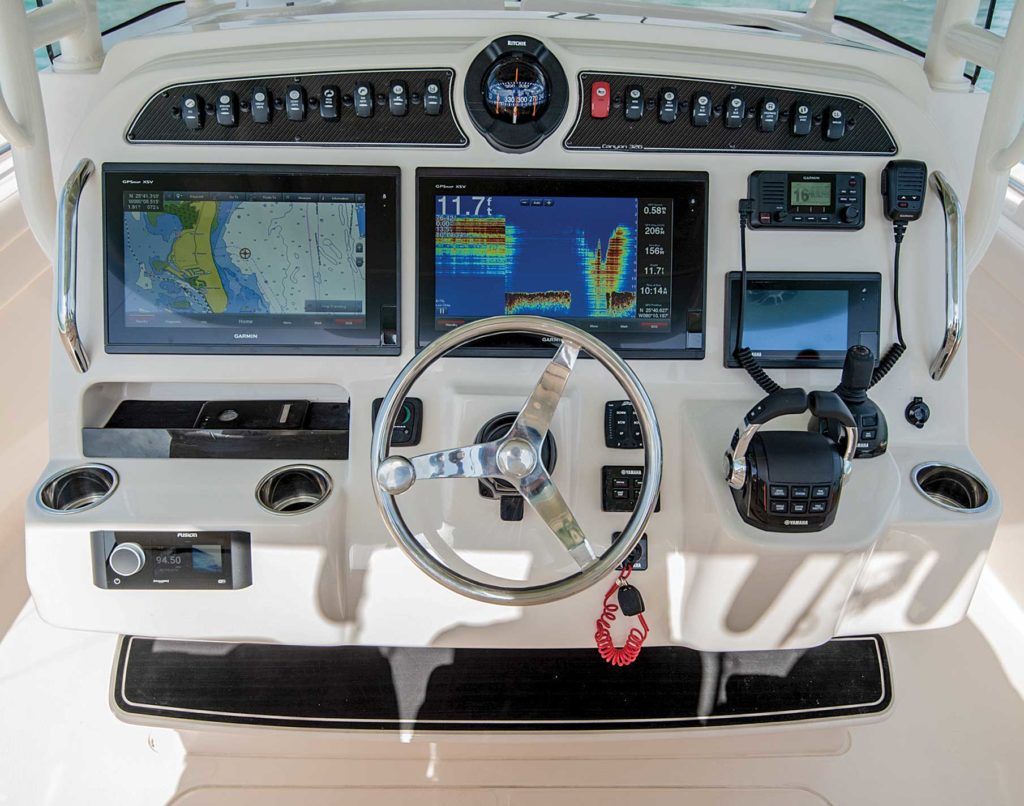
At the helm, twin 17-inch multifunction displays—an aftermarket install for Grady-White boats—showed our plotted course. Atop the console, a clever and handy fiddled storage tray covered with woven vinyl kept our phones from sliding.
Powered by twin Yamaha F300s, our test boat came with the optional Helm Master system and joystick control. We soon employed its Drift Point function, once we found fertile striper grounds.
Bow to Stern
At our first drop, we toured the 326 bow to stern. Inside the bow locker sit a through-stem anchor roller and a standard windlass, with controls at the bow and helm. On top of that locker, a broad forward platform provides plenty of room to throw a cast net.
Twin bow loungers, plus an optional table insert, create a larger casting platform or a sun pad.
The seats come with bolstered backrests that hinge outward along the inwales when not in use. Below lies a pair of 45-gallon fish boxes with overboard drains.
The plush, forward-console bench adds more seating at the bow. Six cup holders provide plenty of accessible nests for cold drinks or cellphones. When it’s time to fish, four gunwale rod holders at the bow give anglers options for fishing kites or spreading out live baits while drifting.
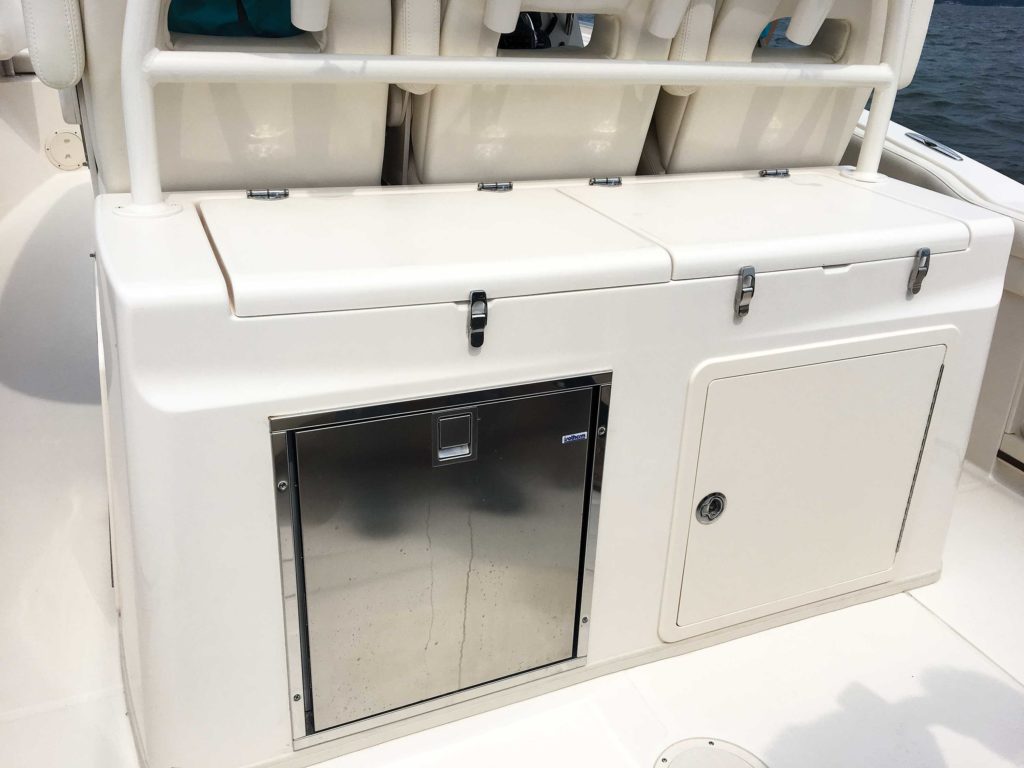
Aft of the helm seats, a rigging station with a freshwater sink and fish box comes standard. Anglers can opt to plumb the 38-gallon box as a livewell, to supplement the standard 32-gallon well in the aft port corner.
An 80-gallon insulated fish box at the transom and a tuna door to starboard offer access to a broad swim deck and two extended platforms—to port and starboard of the engines— for boarding.
Safety and Comfort
Grady also added a dive door on the port side of the cockpit for easier boarding or landing big fish.
Toe rails on each side of the cockpit sole come in handy when fishing in heavy seas. Interestingly, as seven of us jigged along the starboard gunwale, our combined weight barely tipped the 32-footer, a testament to the stability afforded by the 10-foot-9-inch beam.
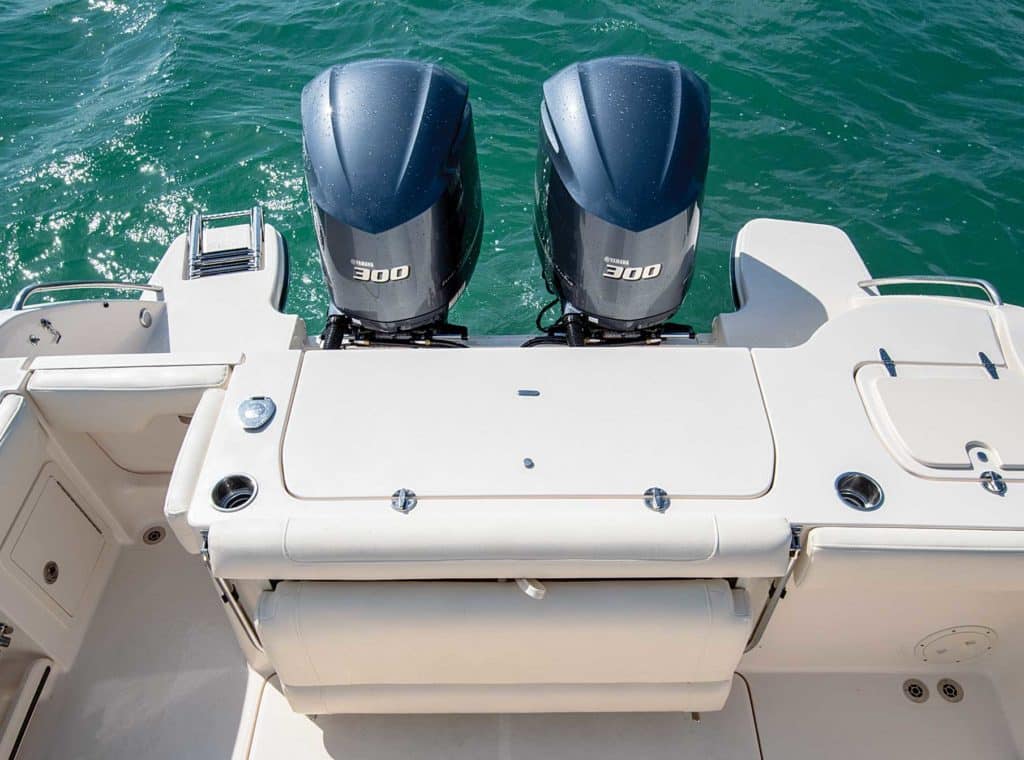
The lockable console hides a mini cabin below, with a cherry-and-holly sole, stainless-steel sink, vanity with full mirror, and VacuFlush head.
Always thoughtful of anglers, Grady configured vertical storage for four rods, plus storage drawers, a bulk-storage locker, and a cubby for four plastic tackle boxes. A fully padded transom bench affords comfortable aft seating between fishing spots. It quickly folds down when necessary and adds to the coaming encircling the cockpit.
Even with the load we carried, the twin F300s popped the 326 onto plane in negligible time.
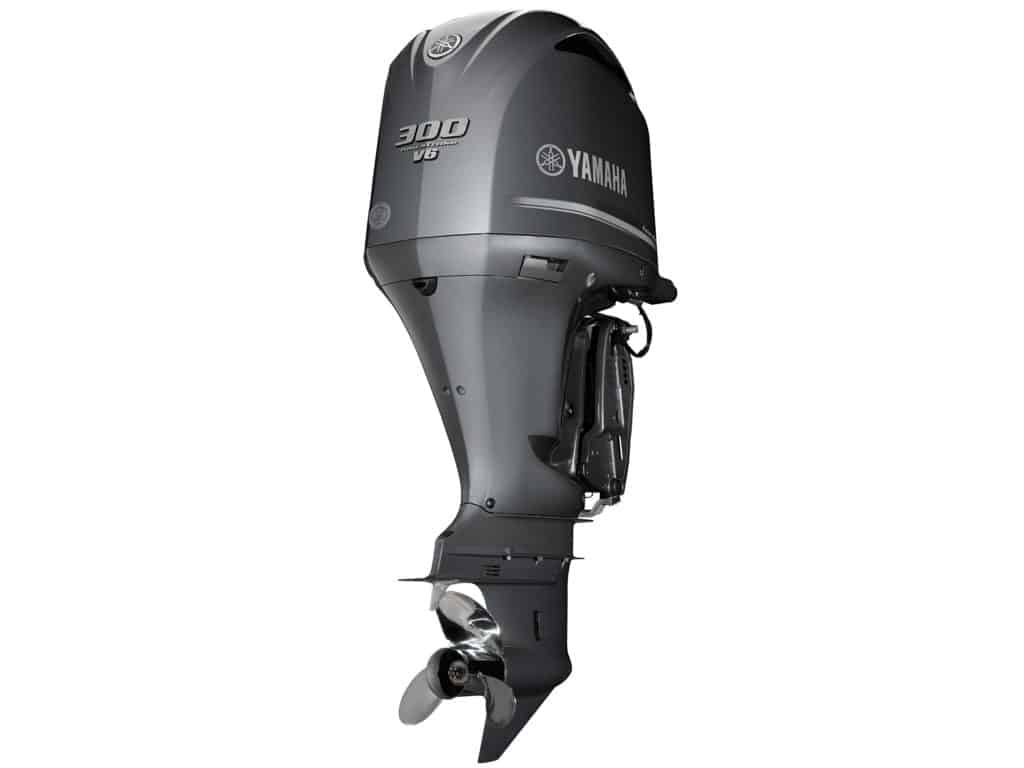
Yamaha lists a zero-to-30 mph time of 6.87 seconds with two adults aboard, a top speed of 49.7 mph at 6,000 rpm, and best fuel economy—1.62 mpg—at 28.1 mph and 3,500 rpm.Despite the chop, turns proved effortless, with minimal centrifugal force, thanks to Helm Master digital power steering. The boat also backed easily in both directions.
The Canyon accommodated seven anglers. At speed and adrift, it proved solid and kept us dry, safe and comfortable on a scruffy day. Those are the hallmarks of a well-built 32-footer.
Specifications
Length: 33′1″ Beam: 10′9″ Draft: 2″ Deadrise: 20 degrees w/ SeaV2 progression Fuel: 327 gal. Water: 30 gal. Weight: 8,500 lb. Max HP: 700 Price: $304,245 w/ twin Yamaha F300s Grady-White: gradywhite.com
Test Conditions
Weather: Cloudy Location: Chesapeake Bay, Maryland Wind: North 15 mph Sea State: Steep chop Test Load: Eight adults, 164 gallons of fuel

